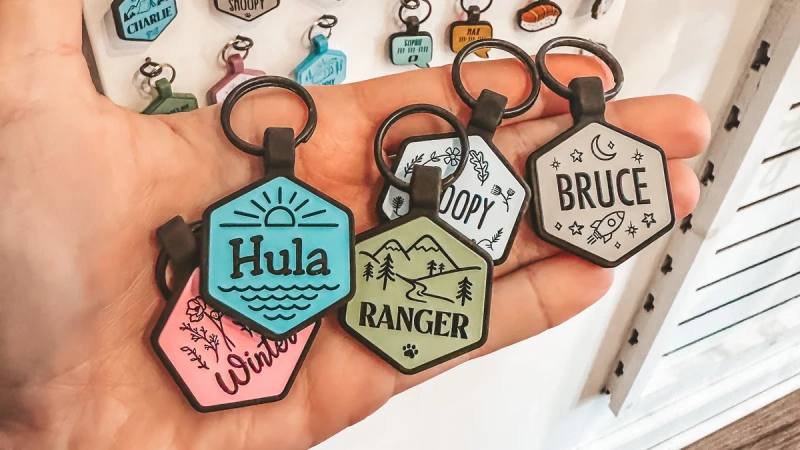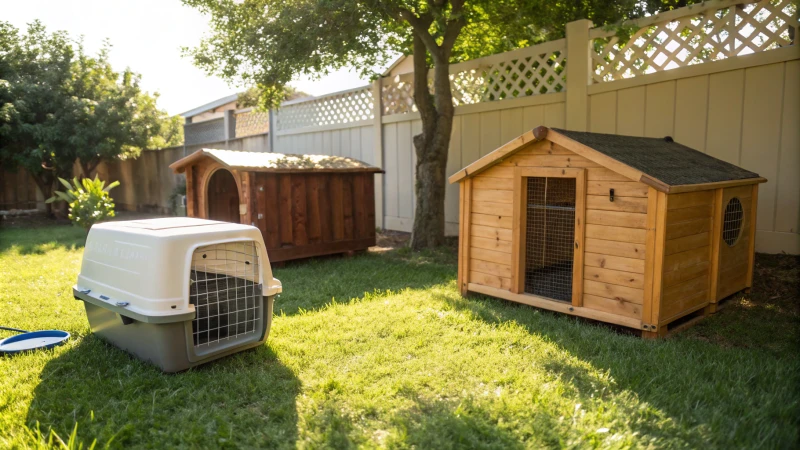
Deciding on the perfect kennel for your pup can feel overwhelming, right?
Plastic kennels are lightweight, durable, and easy to clean, making them ideal for travel and all-weather use. Wooden kennels provide superior insulation and aesthetic charm but demand more upkeep. Assess factors like longevity, climate control, upkeep needs, and style to find the perfect fit for your dog.
When I first had to choose a kennel for my dog, I remember how torn I felt between practicality and style. Each type has its own perks and pitfalls that could sway your decision based on what matters most for you and your canine companion. Dive into this guide to uncover the ins and outs of each option, ensuring you pick a kennel that offers not just functionality but also a cozy retreat for your beloved pet.
Plastic kennels are more durable than wooden ones.True
Plastic kennels withstand various weather conditions, enhancing durability.
Wooden kennels require less maintenance than plastic ones.False
Wooden kennels need regular maintenance to prevent damage and decay.
What are the Key Features of Plastic Dog Kennels?
Remember the first time you brought your furry friend home? The excitement, the cuteness overload! But then came the decision about where they’d sleep.
Plastic dog kennels are a top choice for many pet owners due to their durability, ease of cleaning, and portability. Resistant to rust and lightweight, these kennels offer good insulation and non-porous surfaces that prevent odors, making them both practical and convenient for pet care.
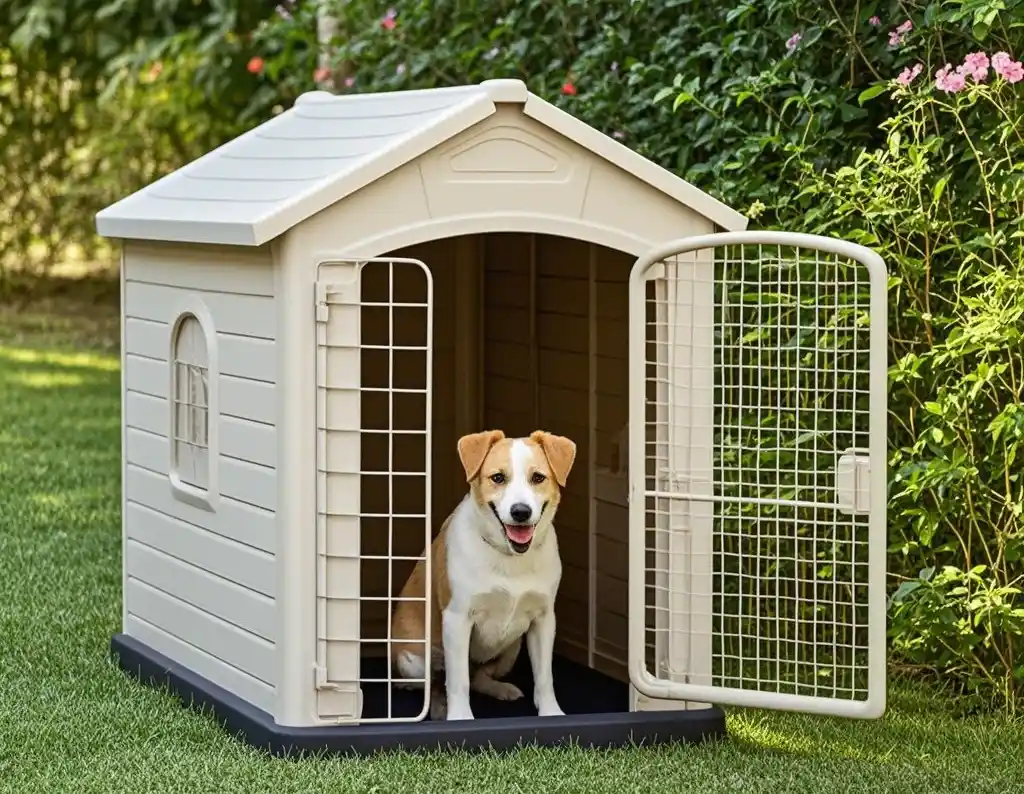
When I first started exploring kennels for my dog, I was drawn to plastic ones because of their practicality. Let me walk you through why these kennels caught my eye.
Durability and Weather Resistance
I live in a place where the weather loves to throw surprises. One day it’s sunny, the next it’s pouring rain. Plastic kennels are like the all-weather friends I never knew I needed. They don’t rust or corrode, which makes them perfect for unpredictable climates. Plus, if you’ve ever had a teething puppy, you’ll appreciate that they’re less likely to become a chew toy1.
Ease of Cleaning
Imagine this: a muddy dog romp in the park, followed by an epic clean-up session. With a plastic kennel, all it takes is some soap and water. The non-porous surface means no lingering smells or trapped moisture—just a fresh, hygienic space for my pup.
| Feature | Description |
|---|---|
| Non-Porous | Prevents absorption of odors and moisture, making it hygienic and fresh. |
| Quick Wash | Simple cleaning process that involves basic soap and water. |
Lightweight and Portability
I remember having to move apartments with my dog. It was hectic, but thankfully, his kennel was easy to transport. Plastic kennels are lightweight, making them perfect for people like me who might need to move their dog’s space around frequently or take it on travels. Consider looking into portable options2 if mobility is a priority.
Insulation Properties
During colder months, I noticed how well-insulated plastic kennels are at maintaining a stable temperature inside. They’re designed to keep pets cozy in winter and cooler in summer. Though in extreme cold, extra measures might be needed.
Variety of Sizes and Styles
Finally, there’s the versatility of plastic kennels. Whether your furry buddy is tiny or a gentle giant, there’s likely a size that fits perfectly. Some models even have double doors for easy access, which is super handy when you’ve got your hands full with other things.
Explore the range of styles available3 to match your aesthetic preferences while ensuring your pet’s comfort.
Understanding these features helped me choose the right kennel for my pet’s needs and hopefully will help you too as you navigate this decision.
Plastic kennels are rust and corrosion resistant.True
Plastic does not rust or corrode, unlike metal, making it ideal for outdoors.
Plastic kennels are heavier than wooden ones.False
Plastic kennels are generally lighter than wooden ones, aiding portability.
How Do Wooden Kennels Compare in Terms of Durability?
Remember the first time you brought your furry friend home? Choosing the right kennel is just as important as picking their first toy. Let’s dive into how wooden kennels stack up in the durability department!
Wooden kennels are incredibly durable, offering great insulation and easy repair options. However, they need regular maintenance to fend off decay and weather damage. With proper treatment, these kennels can brave harsh conditions and remain a long-lasting home for your pet.
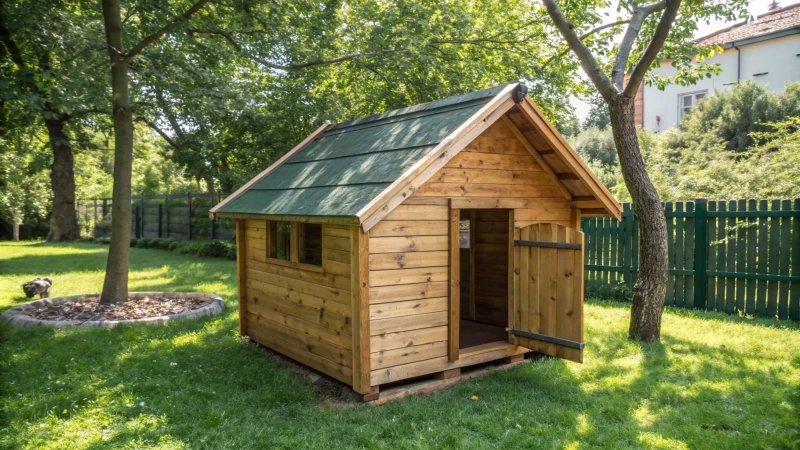
The Strengths of Wooden Kennels
I remember the day we set up our wooden kennel in the backyard, the smell of fresh timber mingling with the crisp morning air. It wasn’t just about a place for my dog; it was creating a haven that would stand the test of time. Wooden kennels are celebrated for their robust durability, thanks to their natural insulating abilities. This means that no matter how sweltering the summer or how biting the winter, the kennel maintains a comfortable temperature inside.
One of the things I love most about wood is its ability to weather diverse conditions when properly treated. Unlike plastic, which can crack under stress, wood stays resilient. Plus, when an overzealous pup decides to test its boundaries (and teeth), wood is forgiving—it can be patched up without needing a complete replacement.
Here’s a quick comparison of key durability aspects:
| Feature | Wooden Kennels | Plastic Kennels |
|---|---|---|
| Insulation | Excellent | Moderate |
| Repairability | High | Low |
| Maintenance | Required | Minimal |
Potential Drawbacks to Consider
But, like any good thing, wooden kennels come with their challenges. I learned the hard way that skipping regular maintenance could lead to decay and pesky insects taking over. It’s essential to keep up with treatments like staining or sealing to ensure longevity.
And if you’re like me—always rearranging and redecorating—note that wooden kennels are hefty. Once in place, they don’t move easily, so it’s crucial to pick the right spot from the get-go.
Further Reading
For those wanting to dive deeper into maintaining wooden structures, you might find these treatment techniques4 useful.
Also, check out repair strategies5 to help extend the life of your wooden kennel.
In conclusion, wooden kennels might require a bit more elbow grease than other options like plastic, but for those who cherish aesthetics and durability, they’re unbeatable. Balancing these factors against your needs and environment will help you decide if this is the perfect fit for your beloved pet.
Wooden kennels offer better insulation than plastic ones.True
Wood's natural insulating properties provide superior temperature regulation.
Wooden kennels are more portable than plastic ones.False
Wooden kennels are heavier, making them less portable compared to plastic.
What Kennel Offers Better Insulation in Harsh Weather?
Choosing the perfect kennel for your dog, especially when extreme weather looms, can feel like an adventure. But armed with the right information, it’s a journey that ensures warmth and safety for your furry companion.
Wooden kennels often provide better insulation in extreme weather due to their natural properties, keeping pets warmer during cold spells. While plastic kennels are easier to maintain, they can also offer decent insulation with certain designs.
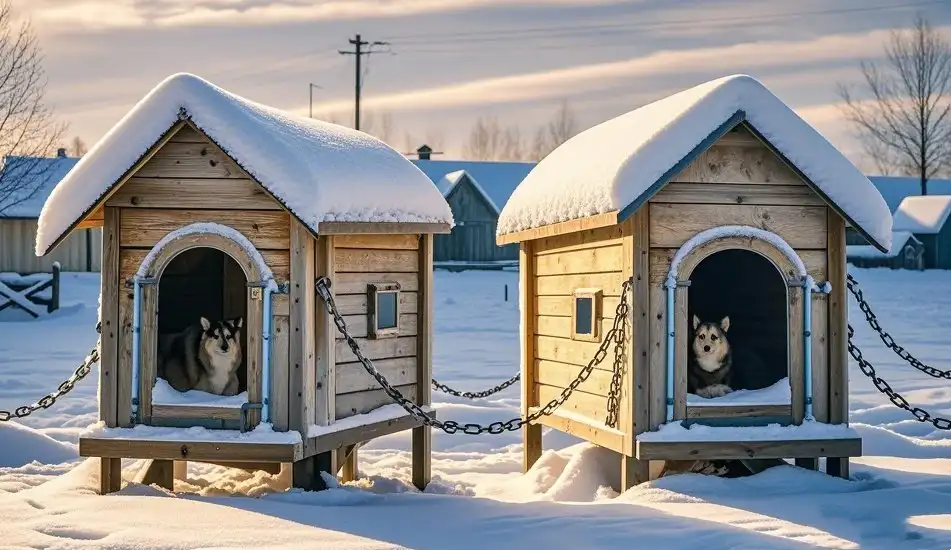
The Insulating Properties of Wooden Kennels
I remember the first time I had to decide on a kennel for my dog during one of those bitter Canadian winters. Wooden kennels came up as the top choice for many reasons. Wood, with its natural insulating properties, seemed to be the perfect fit. The wood fibers trap air effectively, creating a cozy haven against the frigid cold. My dog, who loves the outdoors, always seemed a bit more content in her wooden retreat during those chilly months.
Additionally, there’s something so charming about how a wooden kennel fits into the landscape of a backyard. The aesthetic appeal is undeniable, and customization options mean you can tweak things to suit both your style and your pet’s comfort needs—whether that’s adding extra insulation or adjusting ventilation for warmer days.
| Feature | Wooden Kennels |
|---|---|
| Insulation | Excellent |
| Aesthetic Appeal | High |
| Customization | Easily modifiable |
Of course, there’s a bit of elbow grease involved in maintaining these kennels. Regular upkeep like treating the wood to ward off decay and insects is part of the package, but it’s worth it for the warmth and comfort they provide.
Plastic Kennels: A Durable Alternative
On the other hand, plastic kennels offer their own set of perks. While they might not rival wood in insulation, their design often includes features like double walls that help enhance their insulating capabilities. I found plastic kennels incredibly practical when I needed to move things around quickly—like when a surprise storm was on the way. They’re lightweight, making them easy to relocate if needed.
These kennels are also champions when it comes to low maintenance. Since plastic is non-porous, cleaning is a breeze—just a quick wash with soap and water, and you’re good to go. Plus, they don’t retain odors as wooden ones can sometimes do.
| Feature | Plastic Kennels |
|---|---|
| Insulation | Moderate |
| Maintenance | Low |
| Portability | High |
Factors to Consider When Choosing a Kennel
So, how do you choose between the two? Well, it boils down to a few key considerations:
- Climate: If you live in an area with harsh winters, wooden kennels might be more suitable because of their superior insulation.
- Maintenance: Think about how much time you’re willing to dedicate to upkeep. Wooden kennels require more effort.
- Portability: Need to move the kennel often? Plastic might be more convenient due to its lighter weight.
- Aesthetic Preference: If you prefer a natural look that blends with the outdoors, wooden kennels are often the go-to.
Ultimately, it’s about weighing these factors against your specific needs to ensure your pet stays comfortable and safe no matter what the weather throws at you. For more tips on kennel maintenance6 or how to enhance insulation for your setup by exploring our resources.
Wooden kennels offer better insulation than plastic ones.True
Wood's natural fibers trap air, providing superior insulation against cold.
Plastic kennels require more maintenance than wooden ones.False
Plastic kennels are low maintenance, unlike wood which needs regular care.
How Do I Maintain Different Types of Kennels?
Kennel maintenance might seem daunting, but it’s easier than you think!
Plastic kennels are a breeze to clean with just soap and water, thanks to their non-porous surfaces. In contrast, wooden kennels need more TLC, like sanding and staining, to fend off decay and pests.
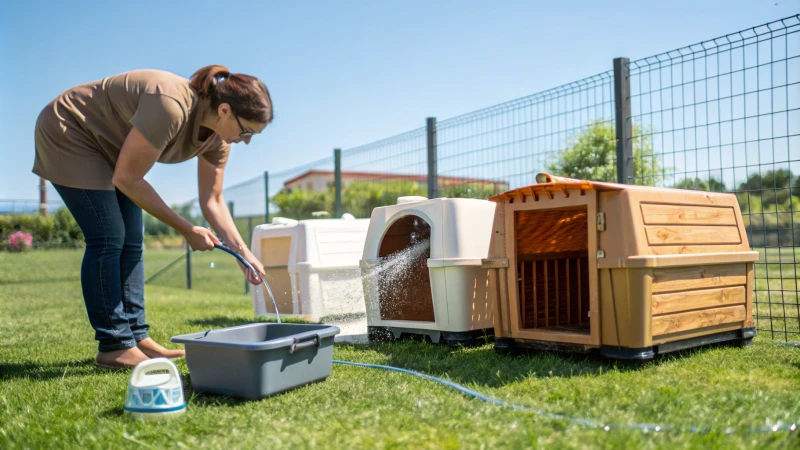
When I first started managing kennels, the variety of materials and their unique care requirements felt overwhelming. But with time, I found that breaking it down by material type made it manageable. Here’s a little guide based on my experiences.
Plastic Kennels: Easy Maintenance
Plastic kennels quickly became my go-to for their sheer practicality. They’re durable and a snap to clean—just soap and water will do the trick. I make it a habit to give them a good scrub weekly, especially after any muddy adventures with the pups. But don’t forget to check for any signs of fading or cracks7 from the sun—this helps keep them looking fresh and functional.
| Task | Frequency |
|---|---|
| Soap washing | Weekly |
| Inspecting for cracks | Monthly |
Wooden Kennels: Regular Care Needed
Wooden kennels are beautiful but a bit high-maintenance. Their charm is worth the effort, though! I remember spending an entire weekend sanding and staining one to prevent decay and keep insects at bay. It’s something I’ve learned to do every couple of years. And keeping an eye on moisture levels is crucial since wood loves to soak up water, which can lead to mold.
| Task | Frequency |
|---|---|
| Sanding and staining | Every 2-3 years |
| Moisture checks | Monthly |
Metal Kennels: Rust Prevention
My metal kennels were my toughest opponents until I discovered the magic of anti-rust coatings. Applying this twice a year has saved me many headaches. Keeping those screws and bolts tight ensures safety, something I learned the hard way after a bolt came loose once.
| Task | Frequency |
|---|---|
| Anti-rust application | Bi-annually |
| Tighten screws and bolts | Monthly |
Indoor Kennels: Hygiene Focus
Indoor kennels bring their own challenges—mainly keeping everything hygienic. I’m obsessed with using pet-safe disinfectants weekly to keep odors at bay and ensure bedding is fresh. It feels great knowing the pets have a cozy and clean space.
| Task | Frequency |
|---|---|
| Disinfecting surfaces | Weekly |
| Laundry of bedding | Weekly |
Understanding these maintenance needs has not only kept my kennels in top shape but also provided a safe haven for all the furry friends. It’s rewarding work! If you’re curious about kennel materials, I highly recommend checking out some informative guides8 that delve deeper into this topic.
Plastic kennels require monthly crack inspections.True
Plastic kennels should be checked monthly for cracks due to sun exposure.
Wooden kennels need sanding every year.False
Wooden kennels require sanding and staining every 2-3 years, not annually.
Conclusion
Choosing between plastic and wooden dog kennels involves weighing durability, maintenance, insulation, and aesthetics to find the best fit for your pet’s needs and your lifestyle.
-
Learn how plastic kennels resist chewing damage compared to wooden ones. ↩
-
Find top-rated portable kennels for pet travel convenience. ↩
-
Explore various styles of plastic kennels to suit different needs. ↩
-
Explore how to effectively maintain wooden kennels to ensure longevity and durability. ↩
-
Learn practical repair methods to keep your wooden kennel in top condition. ↩
-
Find maintenance tips for extending the life of wooden kennels. ↩
-
Discover tips for protecting plastic kennels from UV damage to maintain their appearance. ↩
-
Learn how various kennel materials affect maintenance and durability. ↩


